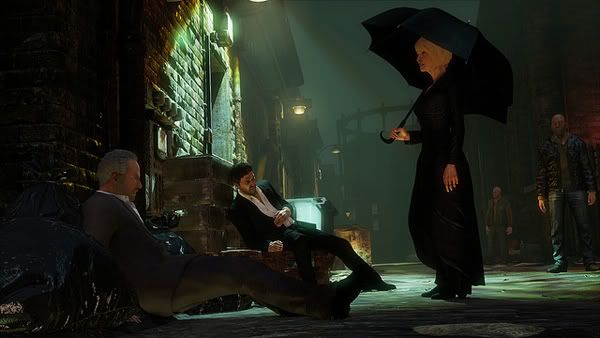This post has not been edited by the GamesBeat staff. Opinions by GamesBeat community writers do not necessarily reflect those of the staff.
Uncharted 3’s puzzles run the gamut from head-scratching to hair-pulling. If you don’t complete a brainteaser within an allotted space of time, the game offers you hints and, eventually, a solution. I always choose the latter. I don’t mind “cheating” if it moves the plot along.
As our own Rus McLaughlin aptly demonstrates, Uncharted 3 is a wholly linear experience. The value derived within doesn’t come from the player’s ability to influence the outcome. Rather, U3 follows the standard template set forth by four decades of gaming — simple interactivity distinguishes it from passive entertainment mediums like film. We become invested in our virtual avatars; in a very literal way, we’re part of the story (even if we’re merely fulfilling a predetermined script). Anything that reminds you that you’re playing a video game breaks that sense of immersion.

I don’t remember Indiana Jones spending hours (or even 5-10 minutes) solving a puzzle. Sure, Indy tackled three tests at the conclusion of The Last Crusade…even though #3 was nothing but a “leap of faith.” And the fedora-clad adventurer frequently consulted his diary or supporting documentation to light the way. But he never stood idle for twenty minutes, trying to decipher ancient Latin Psalms. X marked the spot…not a protracted brainteaser. Spielberg knows a thing or two about pace, and inactivity (without rhyme or reason) puts people to sleep.
When Uncharted 3 soars, its trappings are reminiscent of the best of Indiana Jones, National Treasure, and The Mummy. Snappy dialogue and a sweeping plot distinguish it from the vast majority of interactive entertainment. One moment you’re zipping along, entranced by the cinematic direction and high production values…and then you're standing still.
At their best, the puzzles are requisite pace-setters; a plot needs peaks and valleys. Moreover, the brainteasers are aesthetically pleasing…they capture the exploratory spirit of popular adventure serials. But they also slap you in the face with the inescapable fact that you’re playing a video game. This is not to say that puzzles are intrinsically bad.
I completed the entirety of Portal 2 without consulting an FAQ or walkthrough; I consider that minor achievement a mark of pride. And the test chambers never felt like a distraction. Quite the contrary — Portal 2’s physics-based gameplay is the core experience. But Valve’s gem subscribes to a different brand of storytelling than the Uncharted series. A game that draws inspiration from Raiders of the Lost Ark comes with certain preconceived notions regarding narrative techniques.

Uncharted 3’s formula is intimately familiar — gameplay, cutscene, gameplay, cutscene, etc. Anything that curtails the brisk pace (i.e., stopping to rearrange stone tablets) disrupts my sense of immersion.
Portal 2 doesn’t have the same inherent restrictions. It doesn’t pay tribute to a beloved cinematic franchise, so the game’s template is essentially a blank slate. Thus, we have no expectations. Elaborate test chambers that tax the player for hours on end never distort the pace or flow of the story.
Nathan Drake’s latest adventure is a textbook case of ludonarrative dissonance. The story conveys exciting escapades ala Indiana Jones, but the game betrays the spirit of the narrative. The elaborate puzzles stand in stark contrast to the breezy dialogue and thrilling cutscenes. And the dichotomy is more than a little jarring.
Do I just suck at puzzles? Maybe. But that shouldn’t matter. Since Uncharted 3 is unflinchingly linear, the player’s input shouldn’t detract from the core experience (vicarious thrills courtesy of Nathan Drake). If a tricky brainteaser derails the plot, I have no problem “cheating.”
